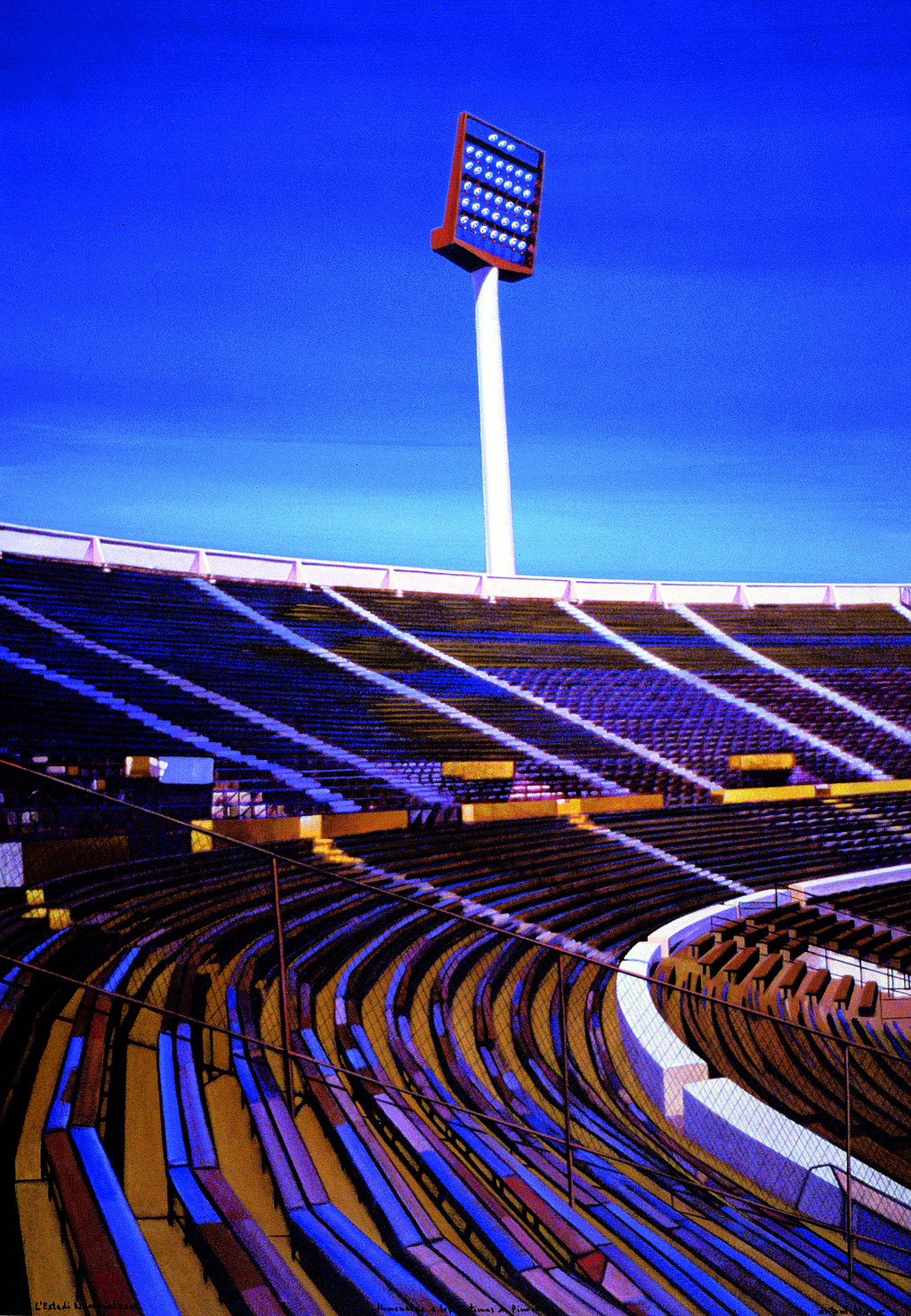L’estadi nacional. “Homenatge a les víctimes de Pinochet” (The national stadium “Homage to the victims of general Pinochet)
One might say that the “Chile” sub-series, painted thirty years before this work, is the origin of the picture. Although Antoni Miró’s has always been a “political artist”, his works in the early 21st Century, though still denunciatory, are more reflective than the ones painted three decades earlier. The author’s reflection on his memories and his interest in recalling tragic episodes of history make him take a less explicit approach than in the past. The artist adopts an amplifying approach, using a specific critique to raise questions that paradoxically have an impact in his own setting. Thus Romero, speaking on the tenth anniversary of the series, stated: “Painting Chilean themes goes beyond solidarity and artistic representation, it denounces Fascist barbarism (...), which goes to the root of our own country and whose ultimate reason is found in mankind.”
Thus, the meaning of this work lies in its reflection on the memory of historical events. Thirty years after Pinochet’s coup d’état, a year before the painting of this work, part of the National Stadium in Santiago de Chile was declared a historical monument. This status was accorded to ensure that the part of the stadium formerly used to imprison and torture people in the early years of the dictatorship was preserved. Thus, when fans now fill the stadium, part of the complex stays empty as a silent tribute to Pinochet’s victims.
The artist refers to the stadium that served as a prison, representing it as it was then — a place where atrocities were committed. The wooden benches, the fences, the vomitoria [underground corridors behind the stands], the walls built with sport in mind had to coexist with the terrible fear of the prisoners and the arbitrariness of the soldiers who acted as jailers, torturers, and executioners.
The picture recalls that appalling episode in Chile’s history and adds to the repository of the memories of suffering. Paradoxically, the victims are evoked by their absence. The photos of the time showed people in the foreground and the stadium in the background. This work brings the victims to mind by showing us the empty stage.
The depiction is intentionally idealised. The painting uses great formal clarity to show what the building looked like at that point in time, removing any trace of human presence or detail that might tell us about its accessory content.
Three elements structure the composition and stand out from the rest through figurative colour contrasts. These elements are: (1) the floodlight stand; (2) the encircling upper boundary wall; (3) the separation wall between the upper and lower stands. This marks, on the one hand, the curve of the building’s layout around one of the corners of the pitch and, on the other hand, focuses the chosen fragment on the picture’s vertical axis. This creates a visual tension through the contraposition of the gracefulness of the lines of benches and the stark vertical line traced by the floodlight stand.
In short, the artistic goal pursued can best be expressed by the inscription over the stadium’s Exit 8: “A people without memory is a people without a future”.
Santiago Pastor Vila
